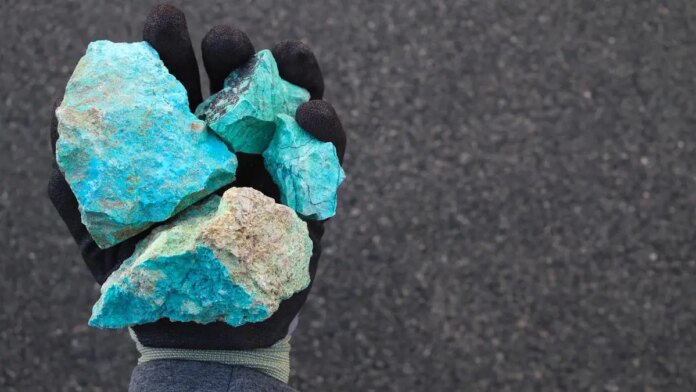The once-obscure sector of critical minerals has, over the years, taken centre stage in geopolitical negotiations. As nations worldwide accelerate their transition towards clean energy and advanced technologies, the scramble to secure lithium, cobalt, nickel, rare earth elements and graphite has intensified, reshaping international partnerships and trade policies. India faces a significant challenge and an opportunity in this evolving landscape.
The country has to reassess its mineral security strategy, enhance diplomatic outreach and bolster domestic capabilities. At present, India remains largely dependent on imports for energy transition minerals and their compounds, with 100 per cent import dependency for minerals like lithium, cobalt and nickel.
This starkly contrasts with the country’s substantial domestic reserves of minerals like cobalt ore (44.9 million tonnes), copper (163.9 million tonnes), graphite (211.6 million tonnes), and nickel (189 million tonnes).
Unless India secures a stable supply of critical minerals through a mix of diplomacy and local production, it will be vulnerable to global supply chain disruptions and the strategic manoeuvres of dominant players.
Geopolitical Chessboard
China, the world’s leading processor and exporter of rare earth elements, has already demonstrated its willingness to leverage this dominance by imposing export restrictions on seven critical rare earth elements – samarium, gadolinium, terbium, dysprosium, lutetium, scandium and yttrium. These minerals are crucial for technologies ranging from military-grade electronics to green energy equipment.
China’s move underscores the fragility of global supply chains, particularly amid intensifying trade frictions with the US. The US’s recent tariff escalations, particularly targeting Chinese clean energy technologies, including a proposed rise from 7.5 per cent to 25 per cent on lithium-ion batteries by January 2026, further incentivises the diversification of sourcing away from China, potentially creating an opening for alternative manufacturing and export hubs like India.
Both developed and developing economies are making moves to become the China alternative. Ukraine is leveraging its underutilised critical mineral reserves to attract American partnerships. Pakistan has emerged as a potential geography for the US investment in mineral resources.
In the UK, a supply chain assessment has prompted calls for an urgent overhaul of national critical mineral policy, underscoring how even developed economies remain exposed to vulnerabilities.
The European Union (EU) has dramatically increased its engagement with Central Asia to pursue alternative mineral supply chains. Brussels recently unveiled a €12 billion ($13.253 billion) Global Gateway investment package to strengthen transport links and deepen cooperation on critical raw materials, digital connectivity, water and energy between the EU and Central Asian countries.
As US developers seek to diversify their sourcing away from China to avoid higher costs, India could benefit by strengthening its domestic clean energy manufacturing ecosystem, supported by production-linked incentive (PLI) schemes and targeted investments in battery, solar and electric vehicle (EV) component production.
To ensure energy security and industrial competitiveness, India has to bolster its access to critical minerals, which are crucial raw materials for such products.
India’s moves
Recognising the urgency of securing critical minerals, India embarked on a proactive diplomatic and strategic outreach. High-level engagement with resource-rich nations like Chile, home to the world’s largest lithium reserves, signals a determined effort to secure long-term access to a mineral crucial for energy storage and EV batteries. Public sector undertakings like Coal India are actively exploring investments in Chilean mining assets to secure long-term access to lithium and copper.
India has also signed Memoranda of Understanding (MoUs) with Australia, Argentina, and the Democratic Republic of Congo to foster collaboration in exploration, technology transfer and commercial investment in mineral supply chains. The country’s partnership with the US under the Critical Minerals Dialogue framework, which seeks to enable co-investment in mining and refining infrastructure, further bolsters its diplomatic efforts.
Diplomatic endeavours alone are insufficient to ensure mineral security. India must prioritise strengthening its domestic ecosystem.
The country’s underdeveloped refining and processing capacity is a key bottleneck even for minerals for which it has substantial reserves. For instance, India lacks the facilities to refine battery-grade cobalt and relies entirely on imports. A similar narrative unfolds for copper and graphite, where smelting constraints and significant import dependence persist.
This pervasive dependency on imports underscores the imperative for India to rethink its mineral supply strategy. The government’s launch of the National Critical Mineral Mission (NCCM), with ₹16,300 crore ($1.88 billion) for exploration and overseas acquisitions alongside public sector investment, is a welcome step in ensuring steady local supply. Amendments to the Mines and Minerals (Development and Regulation) Act to streamline mining approvals and remove customs duties on key minerals are also crucial measures to boost domestic processing and attract private participation.
Long-term measures
Accelerate domestic exploration and sustainable mining: India must prioritise geological mapping, enable private participation, and uphold environmental safeguards to tap its untapped critical mineral reserves and reduce import dependency.
Forge global partnerships for refining and technology transfer: Collaborating with countries like Japan, South Korea and Belgium can boost India’s refining capacity through joint ventures, overseas investments, and access to advanced technologies.
Diversify supply chains through strategic diplomacy: By expanding bilateral agreements and joining multilateral platforms like the Quadrilateral Security Dialogue (QUAD) and Minerals Security Partnership (MSP), India can secure diversified, stable access to critical raw materials from trusted partners.
Expand incentives across the entire value chain: Extending incentive schemes like PLI to cover exploration, refining, and manufacturing will attract investment, boost domestic capacity, and support India’s green industrial ambitions.
Promote circular economy and strategic stockpiling: Investing in recycling infrastructure and creating national reserves will enhance resource efficiency, reduce import reliance, and insulate India from global supply shocks.
India’s aspirations of becoming a clean energy leader and a digital economy powerhouse hinge significantly on its ability to secure diversified, resilient and sustainable access to critical minerals. This is a fundamental national imperative that demands a concerted and strategic approach across diplomacy, industrial policy and technological innovation.
The writer is an Energy Specialist, India Clean Energy Transition at Institute for Energy Economics and Financial Analysis (IEEFA)
More Like This
Published on April 23, 2025



